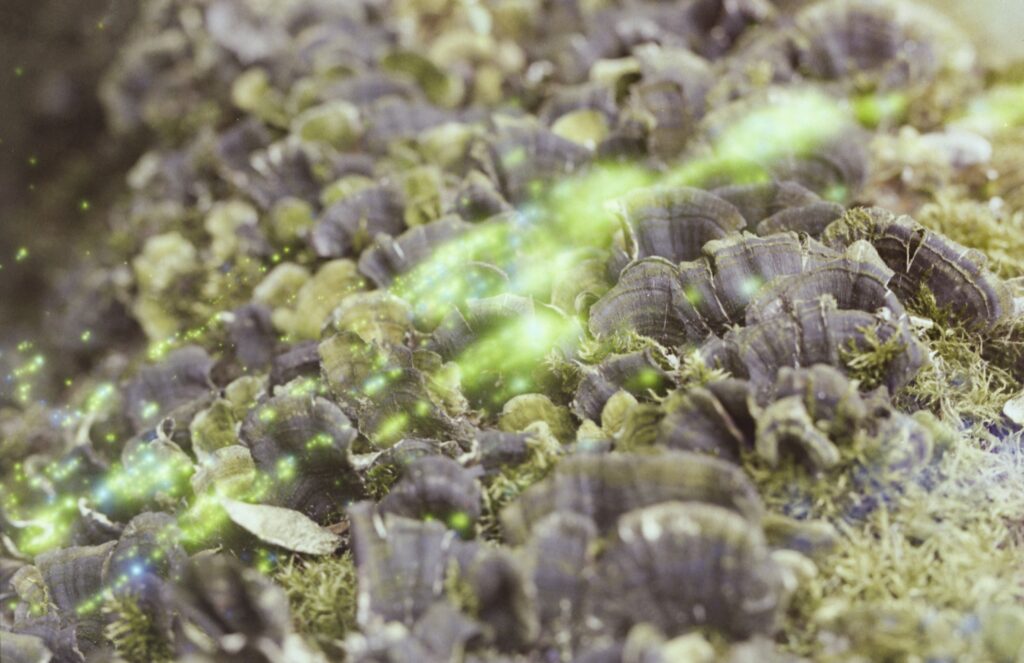Mycorrhizal Wealth of Karpaty / SPUN EXPEDITION
Jadwiga Subczyńska – born 1995 in Gdynia. Graduated from the Faculty of Photography at the University of Arts in Poznań. Her work integrates a mystical perception of reality with science, fantasy and technology. She uses various media, including plant gelatine casts, 3D holographic installations, art books, textiles, and AR videos. A Winner of the ON Award at the OFF FESTIVAL festival in Bratislava (2018).
CROW’S EYE (WRONIE OKO)
A forest not subjected to forest management, which in a rather ruthless way categorizes nature, has been stimulating the human imagination for centuries, becoming the basis of cultural narratives and legends. The history of the Boykos is woven into the area of the Eastern Carpathians, and their knowledge of medicinal plants was often combined with indigenous beliefs. They likely worshipped certain trees or sacred places which they considered to have a special power.
The plants that appear on the fabrics have been collected from places around old monumental trees that scientists have chosen to study on the networks of mycorrhizal fungi. Among the plants you can find: Quatrefoil (Crow’s Eye), Gypsum Tuberous, Burdock, Comfrey Heart, Butterbur, Spring Seed, Monthly Perennial, Stemless Nine Force and Mud Knieć. A large part of these plants was associated with the old beliefs of the local population, traditions or medicine of the time. The plants collected by me represent the biodiversity of vegetation in the buffer zone of the Bieszczady National Park, which has the potential to become a protected area
Quatrefoil / Czworolist (devil’s eye, crow’s eye) kept from plague and cured madness, long known as a magical herb, it was also an ingredient sought after by alchemists. Burdock / Łopian was formerly used for witchcraft, and wreaths of burdock harvested before sunrise had the power to ward off evil spirits. In turn, according to some Highlanders, the stemless nine-leaf / dziewięćsił bezłodygowy/ was supposed to help with nine different diseases. In the Ukrainian part of the Carpathians, the root was given as an expectorant and diuretic. The Polish name nine-force comes from the old Highlander term “nine secret powers”. This plant is also found in highlander ornaments and folk ornaments, it was an ancient symbol with roots in the pagan solar cult. Knieć mud / Knieć błotna, also known as marigold / kaczeniec, was used as a natural dye, among others, for dyeing Easter eggs.
My fabrics indicate the biodiversity of the BNP buffer zone and the tenderness and respect that should be given to beings (Mortonian non-humans) who do not have their own voice in our social structures. The canvases become their banners, manifesting their disappearance, which Morton writes about in his book Anthropshadow. On the other hand, these fabrics refer to folk ornamentation and the rich cultural tradition in which plants, powered by the fungi network, are an important part of beliefs and folk medicine.
















